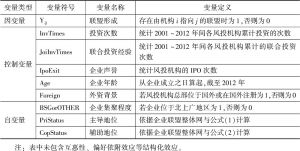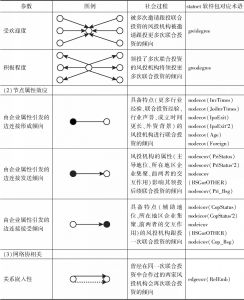章节
角色地位在联盟形成机制中的作用分析
关键词
作者
罗超亮 ,贵州财经大学工商学院讲师、管理学博士,研究方向为战略管理、风险投资。在《中山大学学报》《南开管理评论》等期刊上发表多篇论文,现主持国家自然科学基金青年项目1项,参与国家自然科学基金项目多项。
符正平 ,教授,中山大学自贸区综合研究院院长,兼粤港澳发展研究院副院长,研究方向:产业组织与管理、区域发展战略与管理。
刘冰 ,中山大学旅游学院副教授、管理学博士、硕士生导师。主要研究领域为战略管理、旅游管理、风险投资、社会网络。在Tourism Management、《南开管理评论》、《旅游学刊》等期刊发表多篇论文。主持并完成国家自然科学基金项目和国家社会科学基金项目多项。
王曦 ,南华大学经济管理与法学学院讲师,管理学博士。主要研究领域为战略管理、风险投资、社会网络。在《西北工业大学学报》《山西财经大学学报》等CSSCI期刊上发表论文近10篇。主持湖南省社会科学基金项目1项,参与国家自然科学基金项目多项。
检索正文关键字
章节目录
-
第一节 研究背景
- 一 问题的提出
- 二 国内外研究现状
-
第二节 理论基础与研究假设
- 一 联盟企业的主导地位和辅助地位:基于角色的划分
- 二 基于角色的地位与联盟形成
- (一)主导地位与联盟形成机制
- (二)辅助地位与联盟形成机制
- (三)企业集聚的调节效应
-
第三节 数据、方法与实证分析
- 一 样本来源
- 二 变量与测度
- (一)因变量
- (二)自变量
- (三)控制变量
- 三 统计网络分析
-
第四节 实证分析结果
- 一 描述性统计
- 二 实证分析结果
- 三 实证模型的拟合效果分析
-
第五节 结论与启示
- 一 研究结论
- 二 理论与实践意义
- 三 研究不足与展望
相关文献
查看更多>>>











